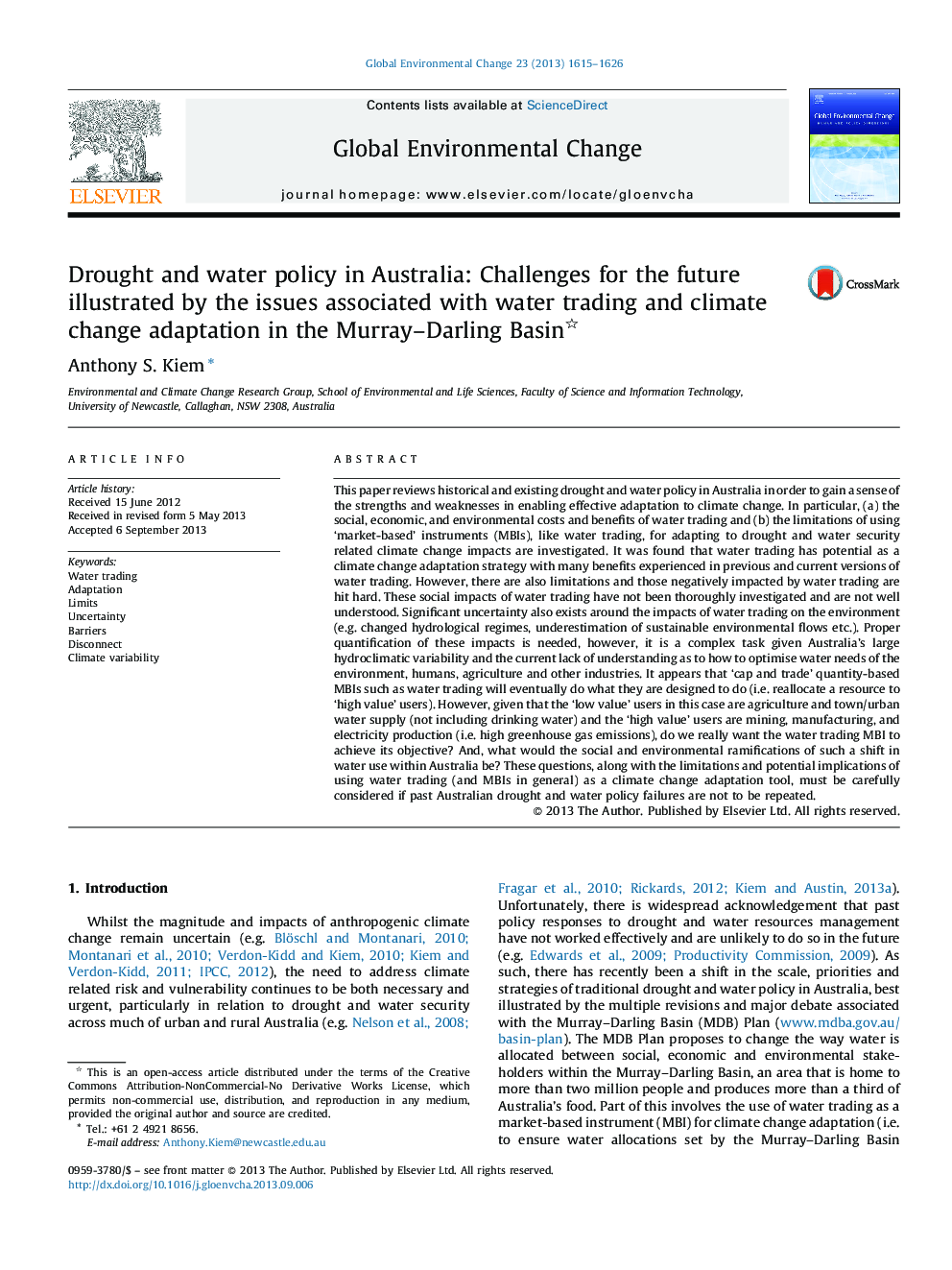| کد مقاله | کد نشریه | سال انتشار | مقاله انگلیسی | نسخه تمام متن |
|---|---|---|---|---|
| 10505035 | 946848 | 2013 | 12 صفحه PDF | دانلود رایگان |
عنوان انگلیسی مقاله ISI
Drought and water policy in Australia: Challenges for the future illustrated by the issues associated with water trading and climate change adaptation in the Murray-Darling Basin
ترجمه فارسی عنوان
سیاست های خشکسالی و آب در استرالیا: چالش های آینده نشانگر مسائل مربوط به تجارت آب و انطباق تغییرات آب و هوایی در حوضه موری-دارلینگ
دانلود مقاله + سفارش ترجمه
دانلود مقاله ISI انگلیسی
رایگان برای ایرانیان
کلمات کلیدی
تجارت آب، انطباق، محدودیت ها، عدم قطعیت، موانع، قطع شدن، تغییرات اقلیمی،
موضوعات مرتبط
علوم زیستی و بیوفناوری
علوم محیط زیست
علوم زیست محیطی (عمومی)
چکیده انگلیسی
This paper reviews historical and existing drought and water policy in Australia in order to gain a sense of the strengths and weaknesses in enabling effective adaptation to climate change. In particular, (a) the social, economic, and environmental costs and benefits of water trading and (b) the limitations of using 'market-based' instruments (MBIs), like water trading, for adapting to drought and water security related climate change impacts are investigated. It was found that water trading has potential as a climate change adaptation strategy with many benefits experienced in previous and current versions of water trading. However, there are also limitations and those negatively impacted by water trading are hit hard. These social impacts of water trading have not been thoroughly investigated and are not well understood. Significant uncertainty also exists around the impacts of water trading on the environment (e.g. changed hydrological regimes, underestimation of sustainable environmental flows etc.). Proper quantification of these impacts is needed, however, it is a complex task given Australia's large hydroclimatic variability and the current lack of understanding as to how to optimise water needs of the environment, humans, agriculture and other industries. It appears that 'cap and trade' quantity-based MBIs such as water trading will eventually do what they are designed to do (i.e. reallocate a resource to 'high value' users). However, given that the 'low value' users in this case are agriculture and town/urban water supply (not including drinking water) and the 'high value' users are mining, manufacturing, and electricity production (i.e. high greenhouse gas emissions), do we really want the water trading MBI to achieve its objective? And, what would the social and environmental ramifications of such a shift in water use within Australia be? These questions, along with the limitations and potential implications of using water trading (and MBIs in general) as a climate change adaptation tool, must be carefully considered if past Australian drought and water policy failures are not to be repeated.
ناشر
Database: Elsevier - ScienceDirect (ساینس دایرکت)
Journal: Global Environmental Change - Volume 23, Issue 6, December 2013, Pages 1615-1626
Journal: Global Environmental Change - Volume 23, Issue 6, December 2013, Pages 1615-1626
نویسندگان
Anthony S. Kiem,
